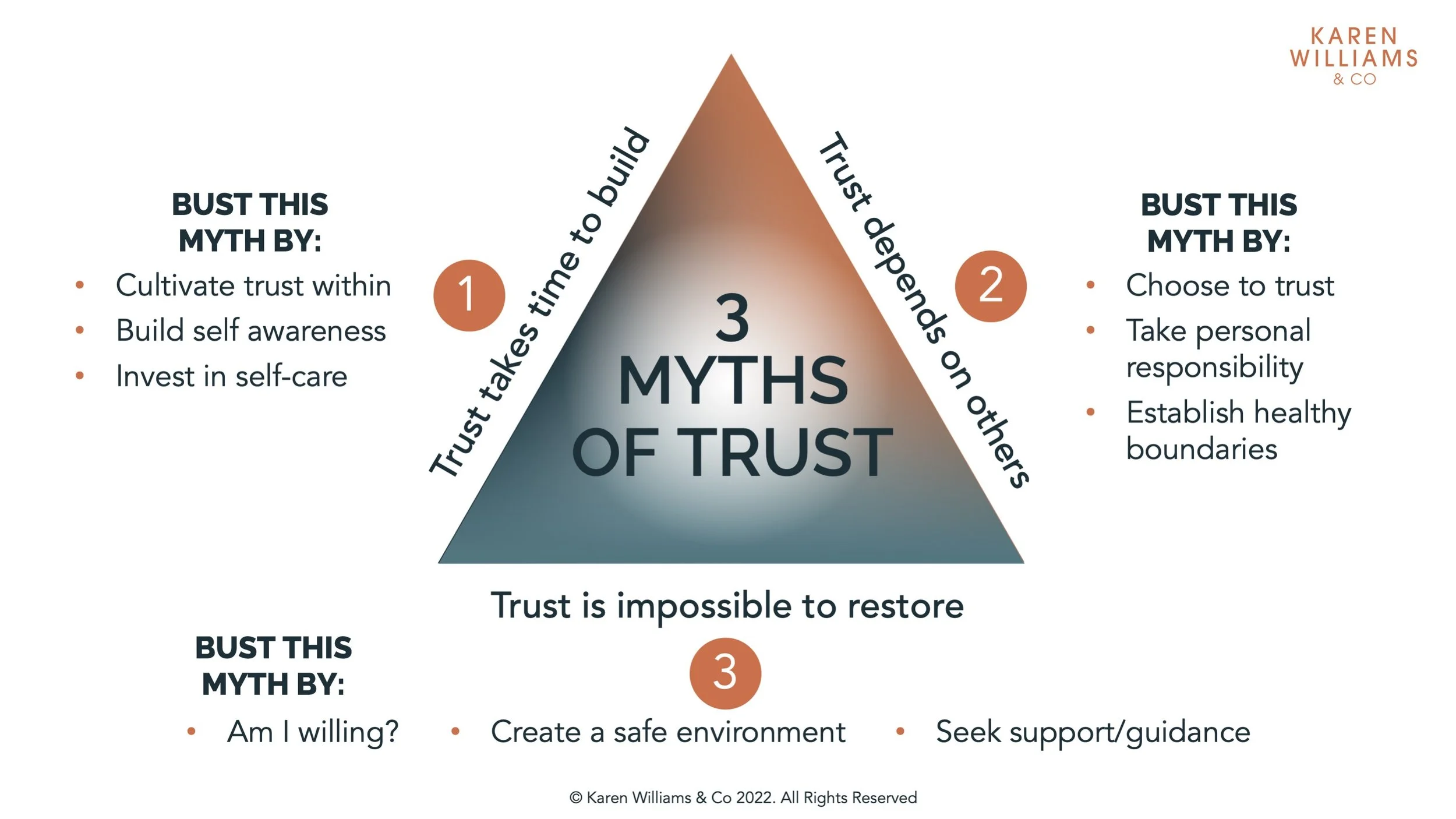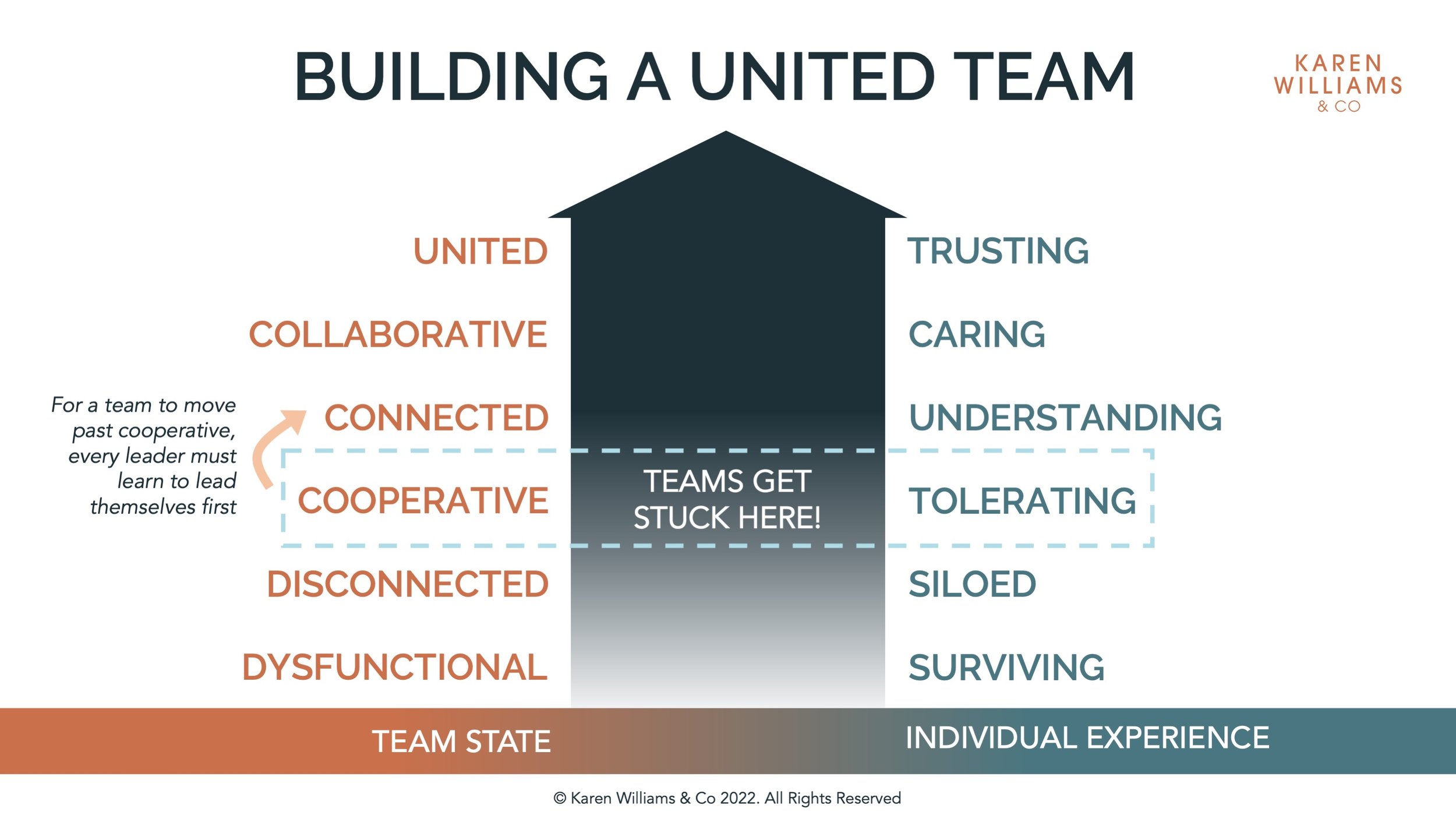
Leading Together
There are 4 levels in The Leadership Excellence System™. Each includes practical tools to develop your leadership, communication and influencing skills. Here’s how the 4 levels click together.
THE
LEADERSHIP EXCELLENCE
SYSTEM™
Below are your foundational tools for Leading Together
What’s Trust Got To Do With It?
The 3 Myths of Trust™
Trust is an important leverage for high performance because when trust is present, people are inspired and driven to invest more of themselves. Without trust, we avoid hard conversations, we shy away from challenging each other, we procrastinate about delivering critical feedback. All negatively impacting the efficiency and effectiveness of our organisation.
The challenge is that we tend to rely on others to behave in ways we need them to for us to give, and keep giving, our trust. When trust is damaged or broken, we expect even more for people to change to repair and restore trust. The challenge arises because no-one has any control over another’s behaviour, and so in wanting others to change for us to trust again, we give our power away.
Consider the 3 Myths of Trust above that show you how to build and restore trust quickly so that you can achieve more positive impact and expand your influence in less time.
The 3 Myths
Trust takes time to build
Trust depends on others
Trust is impossible to restore.
Activity:
Read through the dot points and choose 1 myth to bust this month by practicing the suggestions.
Are You Building a United Team™?
Team Activity:
To move from being a Cooperative team to being a Collaborative and ultimately a United team, every person must be leading themselves first. This is when culture begins to make a positive and transformative shift in a way that’s sustainable. Without a culture of self-leadership, under stress people will default to blaming each other for mistakes, they won’t feel safe to fail, learn and try again, and will wait for instructions rather than risk making decisions.
The first step to growing into a united, trusting, high performing team, is to engage in a discussion to diagnose where the team sits now.
Below are some guidelines to assist you and your team to diagnose your current culture of how you work together. From there you can explore how to move through the stages to being a united and trusting team.
How to know where your team is at on the United Team ladder:
UNITED
People are actively and with intention, owning their ‘stuff’, they are initiating #bravechats with each other in ways that build (rather than break) trust, results are growing exponentially. There are no clicks or work arounds due to personality clashes, people lean in with each other even when it’s difficult.
COLLABORATIVE
Because trust is growing, people are willing to listen, ask better questions, challenge each other without fear or resentment and work together in resolving the real issues that are slowing business down.
CONNECTED
Every team member is practicing self-leadership and beginning to understand themselves and others in new ways - why people say what they say and do what they do. Compassion grows through new understanding which allows new kinds of conversations to occur because people are less reactive and more engaged.
COOPERATIVE
People are pleasant with each other but avoiding ‘difficult’ colleagues and conversations which means problems keep repeating themselves, costly workarounds are created and teams become inefficient.
DISCONNECTED
People have their heads down trying to get through the work, pushing to deadlines, not interested in each other’s challenges.
DYSFUNCTIONAL
People are in a state of high stress, emotional harm has been caused, good people are leaving, leadership and communication is absent or toxic.
Pacing and Leading
The Skill of Connecting & Influencing through Trust
Pacing and Leading is a Neuro Linguistic Programming (NLP) distinction that enables us to connect with, coach and guide others in powerful and efficient ways. Engaging this tool allows us to create safe spaces that support people to tap into new thinking and grow new skills so they can achieve the goals that are important to them.
At the basis of the ability to influence others in this way is our listening and questioning skills. Investing in understanding how someone views the world and processes their experiences enables us to know what to listen for and when and how to ask the right questions that will support someone to thrive.
5 Behaviours of Trust™ - How to build trust with your team
As you’ve learned from Leading Self and Leading Others, thinking drives behaviour and behaviour drives results. So, to change results, we need to shift thinking and to do that trust is critical. Trust supports the brain and nervous system of the person we are coaching to relax and open, allowing their thinking to be challenged and changed.
If trust is not present, people can agree that a positive change is needed, they may even seem to be taking on our coaching, but behaviour is unlikely to change or be sustained.
The 5 Behaviours of Trust are your access to creating environments where people will be open to your coaching, feel safe to reflect on their performance and step into the unknown of learning new skills with your support.
All content in this portal is the property of Karen Williams & Co.
To share or reproduce the content in any form, you must have the direct written permission of Karen Williams.










